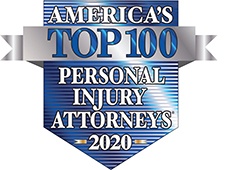Stevens-Johnson Syndrome is a rare but serious allergic condition that starts with a fever, cough, sore throat and fatigue. It happens in response to either an infection or a medication, most often the latter. You might think your were coming down with the flu. Often a wrong diagnosis is made at this point and an antibiotic prescribed.
The Progression of Stevens-Johnson Syndrome
Soon after the flu-like symptoms, ulcers develop on mucous membranes, most often in the mouth or on the lips, but possibly also in the anal or genital areas. In children, the eyes often develop conjunctivitis – inflammation of the eyelid lining. Lesions in the mouth make it very difficult to eat or drink. There is also a skin rash with blisters and a red or purple color.
SJS has another form called Toxic Epidermal Necrolysis (TEN). TEN involves similar ulcers on the mucous membranes, and a more extensive skin rash with blisters. The skin lesions are about an inch wide and can appear anywhere on the body, even the soles of the feet, but not the scalp.
They separate the top skin layer from the middle layer – the dermis, which has the skin’s blood supply (among other structures). Without the nutrients and oxygen delivered by arterial blood, the top skin layer dies and peels off, sometimes in large sheets. This is very painful and life-threatening. With SJS the rash tends to spread over about ten percent of the body; with TEN, it can cover about 30 percent.
What Causes Stevens-Johnson Syndrome?
Some infections that have been found to cause SJS are:
- HIV
- Herpes simplex or herpes zoster
- Typhoid
- Hepatitis
- Diphtheria
- Influenza
When SJS is triggered by a medication, that drug can be identified and discontinued. The medications that most often cause SJS are:
- Nonsteroidal anti-inflammatory drugs (NSAIDs) such as aspirin, ibuprofen and various prescribed medications;
- Penicillins and sulfonamides used to treat infections;
- Anti-gout medications; and
- Anticonvulsants, such as Dilantin, used to treat seizures
SJS may also be caused by use of cocaine or of herbal supplements containing ginseng.
The FDA (Food and Drug Administration) has begun investigating Dilantin as an SJS cause, when it is given by injection or intravenously. In those cases, the Stevens-Johnson Syndrome begins at the injection site and spreads.
Who Is at Risk for SJS?
Although the causative drug may be identified, it is not known why some people have the SJS allergic reaction and others do not. There appear to be some existing conditions that may increase a person’s risk for SJS, such as any disease that reduces your immune system’s effectiveness (e.g., HIV or Lupus), or any viral infection. Also, a gene has been located called HLA-B*1502 that could increase your risk. Research is ongoing.
SJS is found in all age groups but more often in older people, perhaps because more older people take drugs, and many take multiple drugs, which increases the chances that one of the drugs will trigger SJS. It also occurs more often among AIDS sufferers.
Treatment of Stevens-Johnson Syndrome
SJS is a dermatological emergency. One of the skin’s functions is to protect the body from external threats and when skin integrity is violated, all types of parasite can enter the body – bacteria, viruses, mold spores from the air, etc. The skin injury from SJS is comparable to that from a severe burn and treatment is similar at first. In fact, SJS patients are placed in a hospital burn unit for treatment.
Fluids, antibiotics, and pain relief are given through an IV line and patients may be given parenteral feeding (through an IV line, bypassing the digestive system). Local analgesics are given, such as lozenges for mouth ulcers. Depending on the physician’s views, the dead skin may be medically removed (debrided) to promote healing in the remaining healthy skin.
If the eyes are affected, an ophthalmologist will be brought in to help with scar tissue on the conjunctiva that could reduce the person’s vision. After hospital discharge, there may be physical therapy.
There is no standard or accepted treatment for SJS. Some doctors prescribe corticosteroids — steroid hormones that are used by the body’s immune system. Some are given in hopes of reducing inflammation and others in hopes of helping the body to avoid dehydration.
SJS Prognosis
Recovery may take weeks or months. If SJS affects less than ten percent of the skin surface, the fatality rate is about five percent. If it affects more of the skin, fatalities rise. For survivors, there may be impaired vision or blindness and damage or failure in other organs.
If you notice any of these symptoms developing, you should contact your physician at once, especially if you have also been having symptoms like a cold or the flu:
- Tongue swelling
- Facial swelling
- Widespread skin pain with no apparent cause
- A red or purple rash spreading over your skin
- Hives
At Colling Gilbert Wright, we have extensive experience in every aspect of personal injury law, including representing people with severe side effects from defective drugs. Our attorneys have reputations for being effective and aggressive in fighting for our clients’ rights.
If you have SJS after taking Dilantin or another drug that has been pinpointed and discontinued, you may have a valid legal claim. To learn more, please contact our Orlando, Florida office by phone at (407) 712-7300 or online for a free case evaluation. If we are able to take your case, it will be on a contingency basis, meaning that you will owe us no fees unless we win compensation for you.

 (407) 712-7300
(407) 712-7300



























